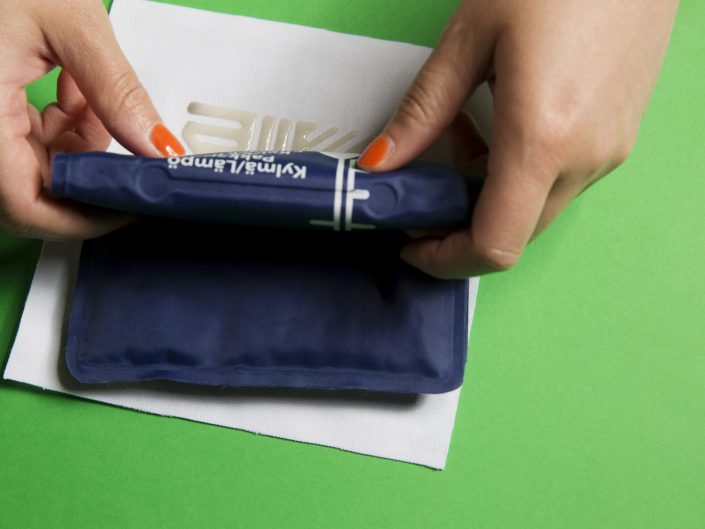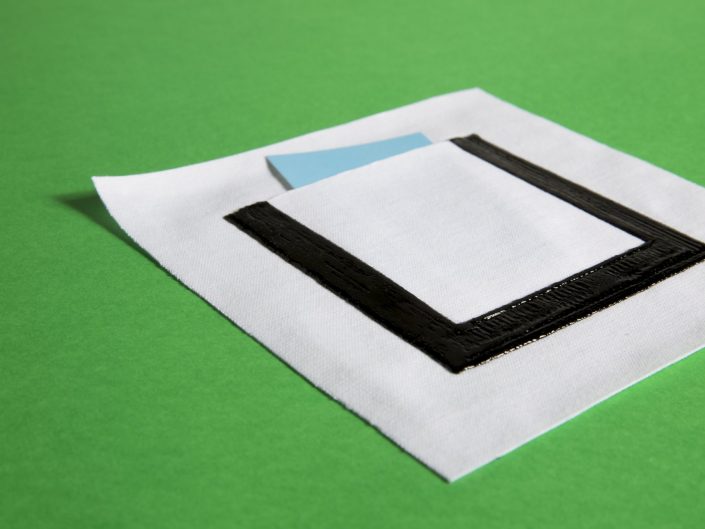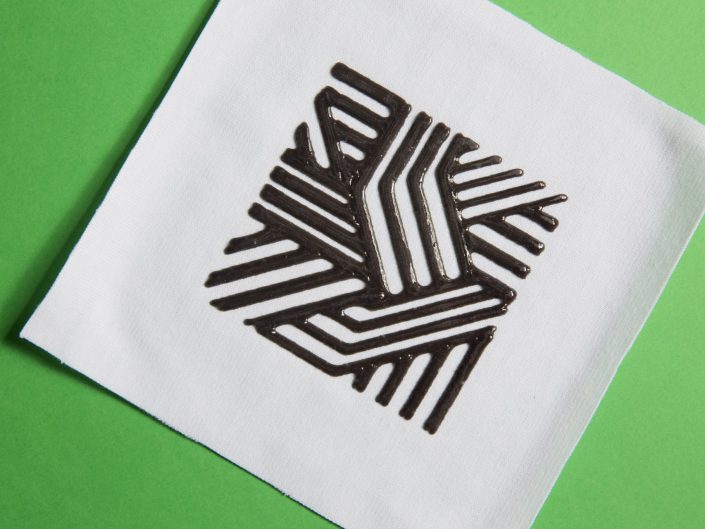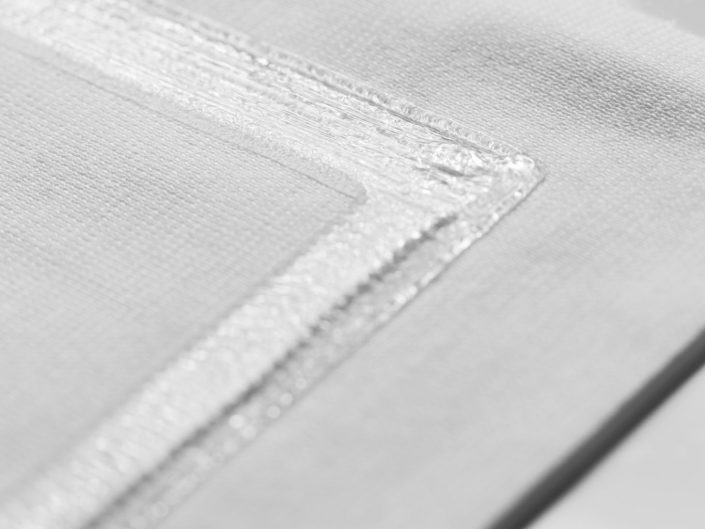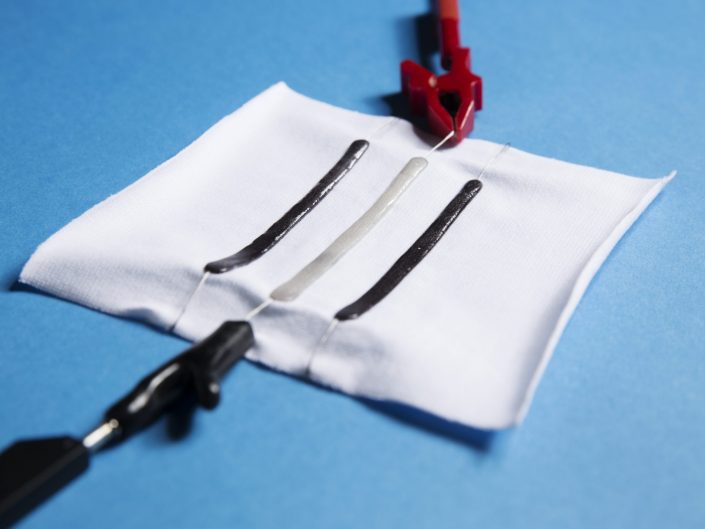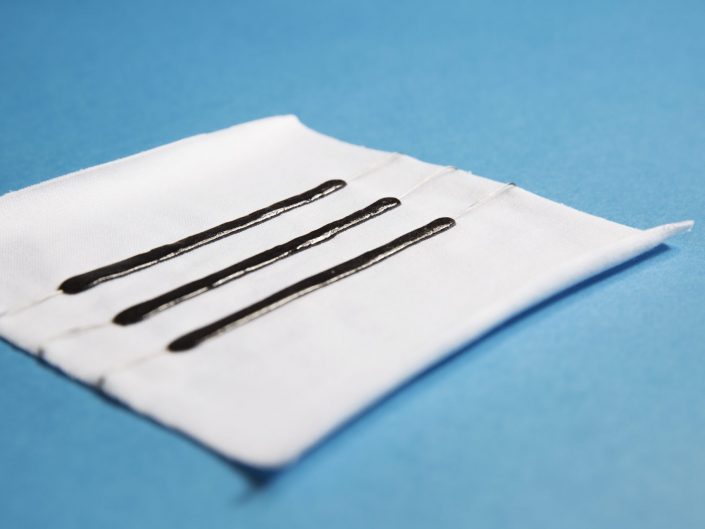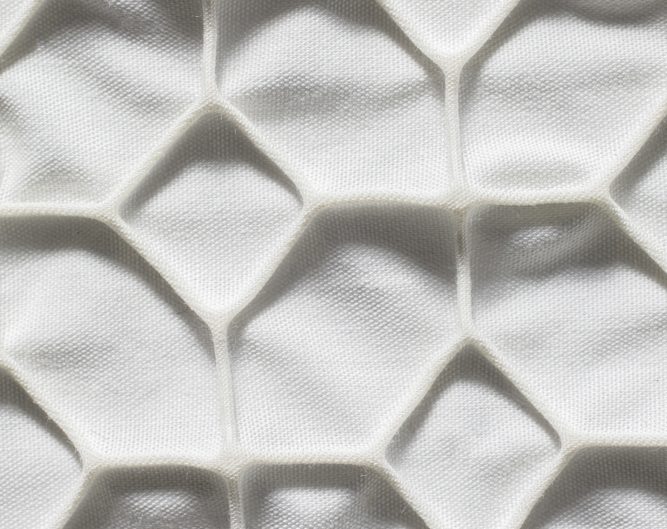TEAM: Pauliina Varis, Ilona Damski, Marjaana Tanttu, and Pirjo Kääriäinen, (Aalto University), Tiia-Maria Tenhunen, Hannes Orelma and Kari Kammiovirta (VTT)
BACKGROUND
We have previously shown the possibility to utilize several different cellulosic materials on fabrics by 3D printing. Now we are moving beyond the visual and haptic effects by utilizing these materials to form functional structures and effects on textiles. We were able to create new forms and functionalities on fabrics by printing cellulosic materials with different shrinkage, hardness or haptic properties and adding small amounts of functional (e. g. reflective and thermochromic) powders.
CHARACTERISTICS
Materials used are mainly cellulosic derivatives and dissolved cellulose due to their good printability and controllable shrinking properties. These materials form hard, soft or shrinking structures that can be further functionalized with e.g. reflective or thermochromics beads.
POTENTIAL APPLICATIONS
Potential applications could be found in textiles where functionalities or visual effects are needed. Possibilities are endless. For example, when mixed with pulp it can used as a seam for a flocking effect, when used with thermoresponsive content it can show when an electric current is passed through it and it can also be used on textile for a smocking effect.
Photos by Eeva Suorlahti.


